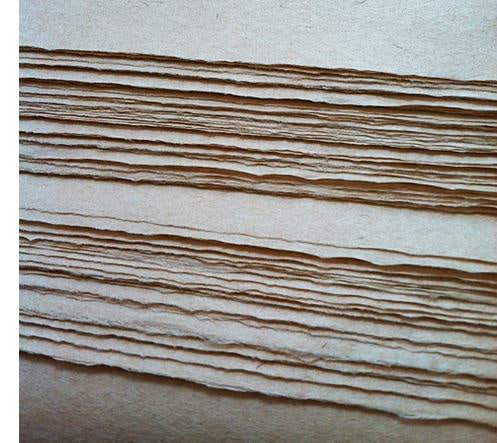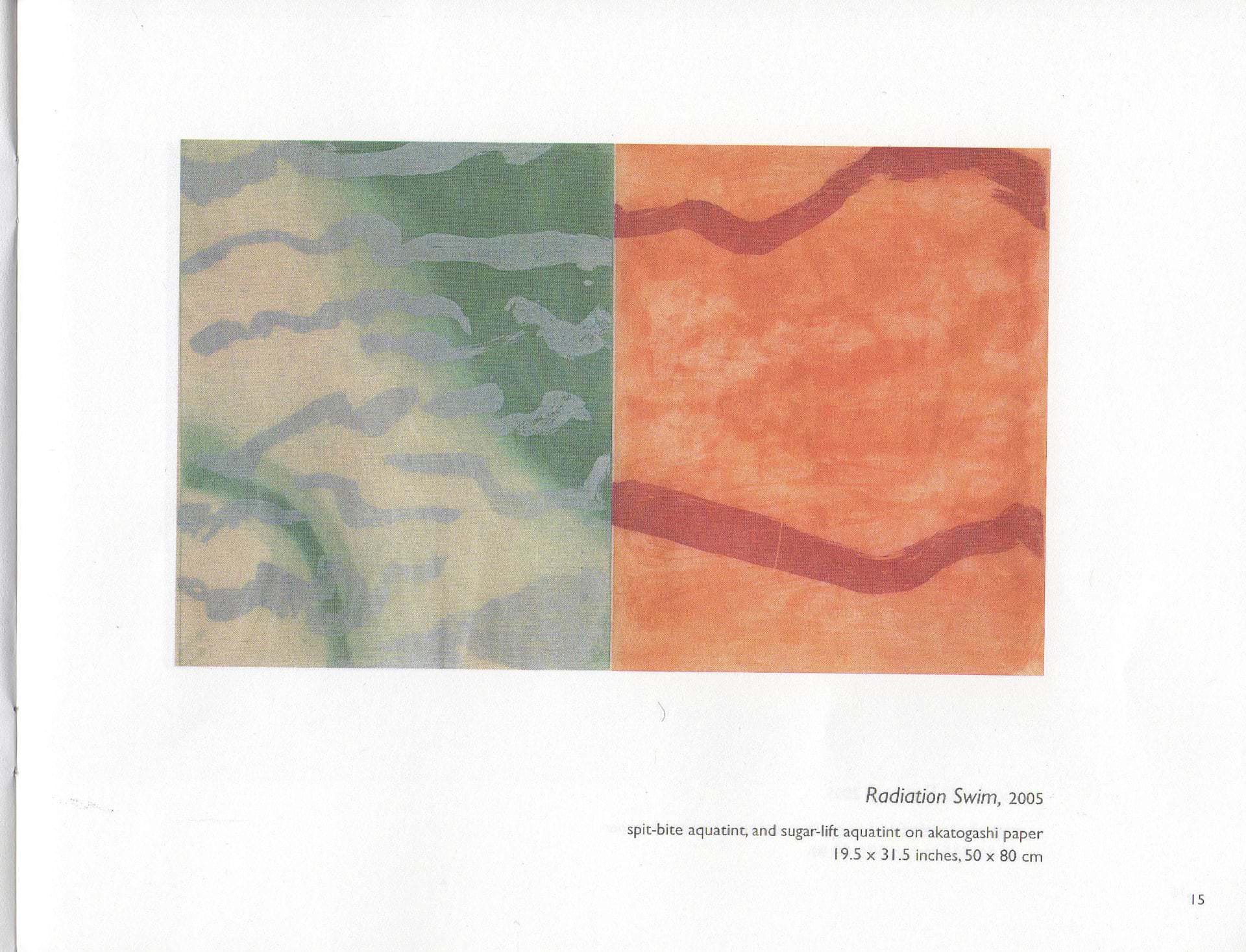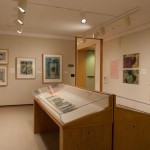September brings us back to school, back to a regular routine, and maybe a case of summertime blues? In case you need some motivation to return to your classes, whether it be teaching or attending, here’s an interview with our Artist of the Month, Kumi Korf. Kumi has been a longtime customer, who faithfully orders her go to paper from us: Akatosashi. This aged kozo paper has a bit of “aka” or a red hue to it, reflecting the maturity of the fiber. And perhaps it takes an experienced hand to work with it. Instead of widely experimenting with our many grades of kozo, Ms. Korf loyally stands by this paper. She knows exactly what she wants, and when she calls, we know to get her usual supply ready. Of course, it’s not the only paper from us she has worked with, but we feel like Akatosashi is a trusted friend for her. If you are an artist who likes your old “reliables”, you will enjoy her interview. Or maybe you are starting off this semester unsure of what direction you want your work to go; Ms. Korf’s expertise can benefit you so you can aim your course wisely.
PCI: What kind of artwork do you do? What or who has influenced/inspired you?
KK: My art work is mostly printmaking and artists’ books. I am in love with 20th century art and 17th century Japanese art.
PCI: What attracts you to working with paper? What do you like best about working with paper?
KK: Being Japanese, paper is the most familiar material next to wood, it being the most beautiful and handcrafted material ever. Paper demands a certain way of handling, and its relationship to water is special. Touching paper is like meditation. When I face paper, and prepare to work on it, with respect to paper and my craft, it returns what I expected and even more.
PCI: Could you elaborate more on the paper’s relationship to water?
KK: When one uses European paper, when it is wet, unless one uses a blotter and weight, it is not possible to keep it flat. In washi’s (Japanese paper) case, air drying keeps the paper flat. In my case, if I want the paper really smooth, I iron it. It’s lightweight and thin, but when damp, I can safely peel the paper off the copper plate. The washi’s long fiber is very useful and wonderful.
PCI: So interesting. It’s sort of a paper urban myth that light weight and thin papers are not strong. How did you hear about our company and paper?
KK: I met my paper in New York.

PCI: We love how you call it your paper, like your own kin! It’s been so long that we have known each other, which we appreciate! We have a mutual colleague: Yasuyo Tanaka, which you two have known each other far longer than we have, but the Kozo connection can be small. How long have you been working with washi?
KK: My knowledge of washi goes back to my childhood. In Japanese everyday life, washi’s presence is everywhere: as part of screen doors, toilet paper, gift wrapping paper, calligraphy paper, sketchbooks, origami, etc., I must have made something with washi as a youth. In the mid 1980s, I started to make my own kozo paper. When I made my own paper, I made it as art by itself, but not paper for printmaking.
PCI: For what process do you use this aged kozo? What did you like about it that aided in your creative and/or technical process?
KK: I use Akatosashi for intaglio prints, because I like its color and finish. It gives me the quality I like and the color I need.

PCI: Tell us more about the unique character of Akatosashi’s color, and why you like it.
KK: Akatosashi, as its name suggests, has that tint of reddish, brownish color. I equate it as an “under painting” color for painting. I consider my prints as paintings more than etchings, so it is very useful. What it does is that undertone unifies colors; I can count on that.
PCI: What a testimony to not only the papermaker but the amazing fiber as well! In what ways did Paper Connection help navigate and perhaps inform you about our selection of Japanese paper?
KK: As a provider of washi for me, not only Akatosashi, but other washi for me, your service is appreciated always.
PCI: Thank you so much. Likewise! And of course, which artist(s) would you like to have a conversation with? We know paper will be a topic!
KK: Rembrandt, Koetsu, Miro, and Matisse.
PCI: Fascinating group! That would be a discussion we’d like to eavesdrop on. Rembrandt makes his appearance again. Thank you so much, Kumi, not only for your time but your long time support.
Kumi Korf is represented by Chandler Fine Art in San Francisco. she also is a member of the Center for Book Arts in New York, where she has been teaching for many years, besides the San Francisco Center for Book Arts, and Ink Shop in Ithaca, New York.
For more on Kumi, please visit her website kumikorf.com.








